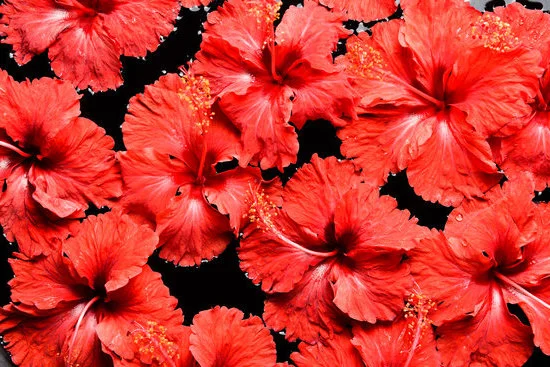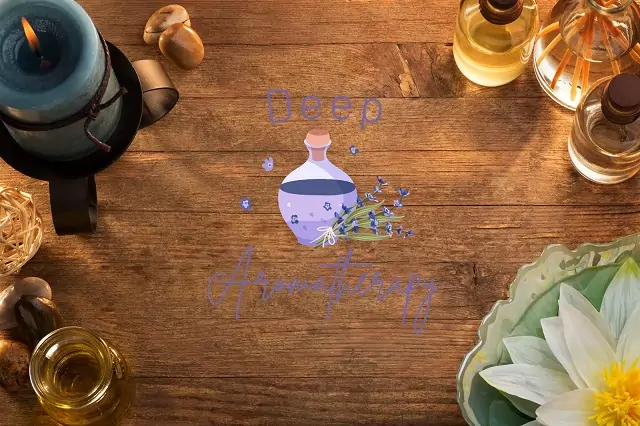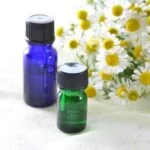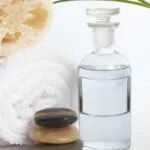Aromatherapy has become an increasingly popular practice for promoting overall well-being and relaxation. With its ability to harness the power of essential oils, aromatherapy offers a natural and holistic approach to improving physical, mental, and emotional health. In this article, we will explore how to do aromatherapy at home, allowing you to experience the numerous benefits of this ancient practice from the comfort of your own space.
But what exactly is aromatherapy? Aromatherapy is the therapeutic use of essential oils derived from plants to enhance a person’s physical and emotional well-being. The scents released by these essential oils have been found to stimulate certain emotions, promote relaxation, and even alleviate stress. This practice has gained popularity in recent years as people seek natural alternatives to improve their quality of life.
The benefits of incorporating aromatherapy into your daily routine are vast. Not only can it help improve mood and reduce stress levels, but it can also aid in promoting restful sleep and relieving headaches or migraines. Aromatherapy has also been known to boost immunity, increase focus and concentration, and even support respiratory health. By integrating aromatherapy into your daily life, you can tap into these incredible benefits and enhance your overall well-being in a simple yet powerful way.
In the following sections of this article, we will delve deeper into the world of aromatherapy. We will discuss how to select the right essential oils for your needs, explore different methods of diffusion for creating the perfect ambiance at home, guide you through creating customized aromatherapy blends, demonstrate various techniques for incorporating aromatherapy into your daily life, and provide specific tips on using aromatherapy for improved sleep and stress relief.
Additionally, we will address important safety precautions to ensure that you have a safe and enjoyable experience with aromatherapy at home. So let’s get started on this aromatic journey towards enhancing your well-being.
Understanding Essential Oils
Essential oils are a key component of aromatherapy, as they carry the potent scents that have various therapeutic effects. Understanding essential oils is crucial for choosing the right scents to incorporate into your aromatherapy practices. These oils are derived from natural sources, such as plants, flowers, and fruits, through processes like distillation or cold-press extraction.
Each essential oil has its own unique aroma and properties, which can offer different benefits to the mind and body. For example, lavender essential oil is well-known for its calming and soothing effects, making it a popular choice for relaxation and sleep support. On the other hand, citrus oils like lemon or orange can uplift moods and promote feelings of energy and positivity.
When selecting essential oils for aromatherapy, it’s important to consider your personal preferences and desired effects. Some people might prefer floral scents like rose or jasmine, while others may enjoy more earthy aromas like patchouli or sandalwood. Experimentation is key in finding the scents that resonate with you the most.
Additionally, it’s important to note any potential sensitivities or allergies you may have when choosing essential oils. Certain oils may cause skin irritations or respiratory issues in some individuals. It’s recommended to perform a patch test on a small area of skin before using any new essential oil topically. If you have any concerns about using specific oils due to pre-existing medical conditions or medications you’re taking, consult with a healthcare professional before use.
Overall, understanding essential oils is fundamental to choosing the right scents for your aromatherapy practices. By taking into account personal preferences and desired effects while also being mindful of any potential sensitivities or allergies, you can create a customized aromatic experience that enhances your overall well-being at home.
Essential Oils Diffusers
When it comes to enjoying the benefits of aromatherapy at home, one essential tool is a diffuser. A diffuser is a device used to disperse essential oils into the air, creating a pleasant and therapeutic ambiance in any space. There are different types of diffusers available, each with its own unique features and benefits.
One popular type of diffuser is an ultrasonic diffuser. This type of diffuser uses ultrasonic vibrations to break down the essential oils into small particles, which are then released into the air as a fine mist.
Ultrasonic diffusers not only distribute the aroma evenly throughout the room but also add moisture to the air, helping to combat dryness or humidity issues. These diffusers often come with adjustable settings for mist intensity and duration, allowing you to customize your aromatherapy experience according to your preferences.
Another type of diffuser is a reed diffuser. Reed diffusers use porous reeds placed in a bottle containing essential oil blends or fragrance oils mixed with carrier oils. The reeds absorb the oil mixture and release the fragrance gradually over time. Reed diffusers are low-maintenance and provide a constant scent without needing any heat or electricity. They are perfect for smaller spaces like bathrooms or areas where you don’t have access to electrical outlets.
To get started with using a diffuser effectively, follow these step-by-step instructions:
- Choose your preferred essential oil or blend: Consider your desired effects and choose an aroma that appeals to you. Whether you want to relax, uplift your mood, improve focus or invigorate your senses, there’s an essential oil suitable for every purpose.
- Fill the water reservoir: For ultrasonic diffusers, fill the water reservoir up to the indicated line with clean water at room temperature.
- Add essential oils: Add 5-8 drops of your chosen essential oil or oils to the water in the ultrasonic diffuser. Adjust the number of drops based on the individual strength of each oil.
- Adjust settings: Depending on your diffuser, you may have options to adjust mist intensity, timer settings, and LED light colors. Experiment with different settings to find what works best for you.
- Enjoy the benefits: Turn on your diffuser and let it disperse the aroma into your space. Sit back, relax, and breathe in the therapeutic benefits of aromatherapy.
| Diffuser Type | Description |
|---|---|
| Ultrasonic Diffuser | Uses ultrasonic vibrations to break down essential oils into small particles released as a fine mist. Adds moisture to the air. |
| Reed Diffuser | Uses porous reeds placed in a bottle containing essential oil blends or fragrance oils mixed with carrier oils. Constantly releases fragrance without heat or electricity. |
By incorporating an essential oil diffuser into your daily routine, you can create a relaxing and rejuvenating environment that promotes overall well-being. Experiment with different scents and techniques to find what works best for you and enjoy all the benefits that aromatherapy has to offer from the comfort of your own home.
DIY Aromatherapy Blends
Guide to Creating Personalized Blends
To truly personalize your aromatherapy experience, you can create your own signature blends by combining different essential oils. This allows you to tailor the scents and therapeutic properties to suit your preferences and desired effects. Here is a guide to help you get started:
- Research the Essential Oils: Begin by researching the different essential oils available and their specific properties. Some oils are known for their calming effects, while others may have energizing or mood-enhancing qualities. Understanding each oil’s benefits will help you in creating blends that cater to your needs.
- Start with Base Notes: When creating a blend, it is helpful to start with base notes, which provide the foundation of the scent and tend to linger the longest. Examples of base notes include sandalwood, patchouli, and vanilla. Experiment with different combinations of base notes until you find a pleasing aroma.
- Add Middle Notes: Middle notes serve as the balance between base and top notes, providing complexity and fullness to your blend. Lavender, rosemary, and geranium are examples of middle notes that can be used in various combinations.
- Finish with Top Notes: Top notes are typically lighter and more volatile than base or middle notes, giving the initial burst of fragrance when smelling the blend. Citrus oils like lemon or bergamot can act as uplifting top notes that add freshness and energy.
Tips for Dilution and Storage
Once you have created your desired blend, it is important to know how to properly dilute and store it for safe use and long-lasting potency.
- Diluting Your Blend: Essential oils are highly concentrated substances that should be diluted before applying them directly onto the skin. A general guideline is to use 2-5% essential oil dilution for topical application. This means mixing 20-30 drops of essential oil with 1 ounce (30 milliliters) of a carrier oil, such as jojoba or sweet almond oil.
- Storage: To maintain the quality and potency of your DIY blends, it is essential to store them properly. Keep your blends in dark glass bottles to protect them from sunlight and store them in a cool, dry place away from heat and humidity. This will help extend their shelf life and prevent degradation.
Remember, every individual’s preferences and sensitivities may vary, so it’s important to conduct patch tests before applying any blend onto larger areas of the skin.
By customizing your own signature aromatherapy blends, you can create scents that bring you joy, relaxation, or energy depending on your needs. Experiment with different combinations to discover your favorite blends that enhance your well-being and promote a positive atmosphere in your home.
Aromatherapy Techniques
Incorporating aromatherapy into your daily life is a wonderful way to enjoy its numerous benefits. There are several techniques that you can utilize to enhance your aromatherapy experience. It’s important to note that different techniques work best for different individuals, so feel free to experiment and find what works best for you.
- Inhalation: Inhalation is one of the most common methods of using essential oils in aromatherapy. This technique involves breathing in the aroma of the essential oil directly or through diffusion. You can simply add a few drops of your chosen essential oil to a tissue or handkerchief and inhale deeply whenever needed. Alternatively, you can use an essential oil diffuser, which releases the fragrance into the air, filling your space with its therapeutic benefits.
- Massage: Aromatherapy massage combines the benefits of touch and smell to enhance relaxation and promote overall well-being. To create an aromatherapy massage oil blend, mix a carrier oil such as jojoba or sweet almond oil with a few drops of your chosen essential oils.
Make sure to dilute the essential oils properly before applying them directly on your skin. Apply the blended oil onto your skin and gently massage it into your body using long, sweeping motions. - Topical Application: Applying essential oils topically can be an effective way to target specific areas of concern such as muscle tension or skin issues. Before applying any undiluted essential oil on your skin, it’s important to perform a patch test to check for any potential sensitivities or allergic reactions.
If no adverse reaction occurs, you can proceed by diluting the essential oil in a carrier oil at a suitable ratio and applying it directly on the affected area.
Remember, safety should always be a priority when incorporating aromatherapy techniques into your daily life:
- Never apply undiluted essential oils directly onto your skin, as they can cause irritation or sensitivities. Always dilute them properly with a carrier oil.
- Be cautious when using certain essential oils around children, pregnant women, and pets, as some oils may not be safe for them.
- If you have any pre-existing health conditions or are taking medications, it is important to consult with a healthcare professional before using aromatherapy.
By incorporating these aromatherapy techniques into your daily life, you can enjoy the benefits of relaxation, stress relief, improved sleep, and more. Experiment with different essential oil blends and find what works best for you to create a calming and rejuvenating atmosphere in your home.
Aromatherapy for Improved Sleep
Getting a good night’s sleep is crucial for our overall well-being and quality of life. However, many people struggle with insomnia or have difficulty falling asleep due to stress, anxiety, or other factors. Incorporating aromatherapy into your bedtime routine can help create a relaxing atmosphere and promote restful sleep.
When it comes to using aromatherapy for improved sleep, certain essential oils are particularly beneficial. Lavender oil is widely regarded as one of the best essential oils for promoting relaxation and inducing sleep. Its soothing scent has been shown to reduce anxiety and improve the quality of sleep. Another popular choice is chamomile oil, known for its calming properties and ability to ease nervous tension.
To integrate aromatherapy into your bedtime ritual, follow these step-by-step instructions:
- Choose a suitable essential oil: Based on your personal preferences and desired effects, select an essential oil that promotes relaxation and helps you unwind before bed.
- Select a delivery method: There are various ways to enjoy the benefits of essential oils at night. You can use a diffuser to disperse the aroma throughout the room or create a simple DIY spray by diluting the essential oil with water in a spray bottle.
- Prepare your sleeping environment: Before getting into bed, ensure that your bedroom is clean, clutter-free, and conducive to relaxation. Dim the lights, play soft music if desired, and spritz your chosen aromatherapy blend around the room.
- Indulge in some self-care: Prioritize self-care activities that promote relaxation before bed, such as taking a warm bath infused with essential oils or practicing gentle stretches.
- Use proper dilution: It is important to remember that pure undiluted essential oils can be too strong when applied directly to the skin. Always dilute them with a carrier oil like coconut or jojoba oil before applying topically.
By incorporating aromatherapy into your bedtime routine, you can create a calming and inviting atmosphere that promotes restful sleep. Remember to consult with a healthcare professional if you have any underlying health conditions or concerns about the use of essential oils. Embrace the power of aromatherapy and enjoy a peaceful night’s sleep from the comfort of your own home.
| Essential Oils | Benefits |
|---|---|
| Lavender | Reduces anxiety and improves sleep quality |
| Chamomile | Calming properties and eases nervous tension |
Aromatherapy for Stress Relief
Aromatherapy has long been recognized for its ability to promote relaxation and relieve stress. Incorporating aromatherapy into your daily routine can be a powerful tool in managing stress and achieving a sense of calmness. In this section, we will explore the specific essential oils known for their stress-relieving properties and suggest different methods to incorporate aromatherapy for stress relief.
Essential oils for stress relief
When it comes to choosing essential oils for stress relief, there are several options to consider. Lavender oil is one of the most popular choices due to its calming and soothing effects on the mind and body. It can help reduce anxiety and promote a restful sleep. Another effective option is bergamot oil, which has uplifting properties and can help alleviate feelings of tension and anxiety.
Other essential oils known for their stress-relieving properties include chamomile, ylang-ylang, frankincense, and clary sage. Each oil has unique qualities that can contribute to relaxation and stress reduction. Experimenting with different scents can help you find the perfect blend that works best for you.
Methods of incorporating aromatherapy for stress relief
There are various ways you can incorporate aromatherapy into your daily life to achieve stress relief. One method is creating a calming bath by adding a few drops of your chosen essential oil to warm bathwater. The steam from the bath will release the aroma of the oil, promoting relaxation as you soak in the soothing water.
Another method is using a stress-relief inhaler. These small devices contain a cotton wick soaked with essential oils that can be inhaled whenever you feel stressed or overwhelmed. Simply take deep breaths of the inhaler’s aroma to experience its calming effects.
Finally, incorporating aromatherapy into massage sessions can also provide stress relief benefits. Dilute your chosen essential oil with a carrier oil and gently massage it into your skin. The combination of touch and scent can help relax both the mind and body.
It is important to note that while aromatherapy can be a useful tool for stress relief, it may not be a substitute for professional help in managing chronic or severe stress. If you are experiencing persistent stress or have underlying health conditions, it is always best to consult with a healthcare professional before relying solely on aromatherapy.
Safety Precautions
Aromatherapy is a wonderful practice that can bring many benefits to your daily life. However, it’s important to ensure that you are practicing aromatherapy safely to avoid any potential risks or adverse effects. By following some simple safety precautions, you can have a safe and enjoyable aromatherapy experience at home.
Proper dilution and storage
One of the most important safety tips in aromatherapy is proper dilution of essential oils. Essential oils are highly concentrated substances and should always be diluted before use. This can be done by mixing a few drops of essential oil with a carrier oil such as jojoba oil or almond oil.
The specific dilution ratio will depend on the individual essential oil and its intended use. It’s also important to store essential oils properly to maintain their potency and quality. They should be stored in dark glass bottles away from heat, light, and moisture.
Knowledge of contraindications
It’s crucial to be aware of any potential contraindications associated with certain essential oils. Some essential oils may not be safe for use during pregnancy, while others may cause skin irritation or interact with certain medications. It’s always recommended to do thorough research or consult with a healthcare professional if you have any concerns or pre-existing conditions before using essential oils.
Patch testing
Before using any new essential oil or blend, it’s a good idea to perform a patch test on a small area of your skin. This can help determine if you have any sensitivities or allergies to the oil and prevent any adverse reactions from occurring.
By following these safety precautions, you can ensure that your aromatherapy experience at home is safe and enjoyable. Remember, always prioritize your health and well-being when incorporating aromatherapy into your daily routine.
Conclusion
In conclusion, aromatherapy is a powerful practice that offers numerous benefits and can easily be incorporated into your daily routine from the comfort of your own home. Throughout this article, we have explored the various aspects of aromatherapy, including understanding essential oils, using diffusers to create the perfect ambiance, creating DIY blends, and implementing different techniques for maximum effectiveness.
By selecting the right scents and creating personalized blends, you can tailor your aromatherapy experience to meet your individual preferences and desired effects. Whether it’s improving sleep or relieving stress, there are specific essential oils known for their calming and relaxing properties that can help enhance your well-being.
It is important to consider safety precautions when using essential oils. Proper dilution and storage are crucial to ensure a safe aromatherapy experience. If you have any concerns or are unsure about certain essential oils, it is always recommended to consult with a healthcare professional.
Now that you have a better understanding of aromatherapy and its benefits, it’s time to start embracing this practice in your daily life. Incorporate aromatherapy into your bedtime routine for improved sleep or use stress-relieving methods such as creating a calming bath or using stress-relief inhalers. The possibilities are endless.
Take the first step today and begin exploring the world of aromatherapy from the comfort of your own home. Start enjoying its numerous benefits for not only your physical well-being but also for relaxation and overall mental wellness. Embrace all that aromatherapy has to offer and unlock its potential in enhancing every aspect of your life.
Frequently Asked Questions
How can I practice aromatherapy at home?
Practicing aromatherapy at home can be a wonderful way to enhance your well-being and create a soothing atmosphere. One simple method is to use essential oils in a bath, by adding a few drops of your chosen oil to the warm water as you soak. This allows the aromatic molecules to mix with the steam and have a calming effect on your mind and body. Another way to practice aromatherapy is through massage.
Dilute your preferred essential oil with a carrier oil, such as almond or jojoba oil, and gently massage it into your skin. The scent will promote relaxation while the massage provides physical relief. Additionally, using an oil burner or diffuser can infuse the air with pleasant scents. By adding water and a few drops of essential oil to these devices, you can create an inviting ambiance that can positively impact your mood.
How do you perform aromatherapy?
Aromatherapy is performed by utilizing essential oils derived from plants to improve one’s physical, emotional, and mental well-being. The most common method involves using a diffuser, which disperses the aroma of essential oils throughout the room. To perform aromatherapy using this technique, simply add water along with several drops of your chosen essential oil into the diffuser’s designated compartment, then turn it on and allow it to release the fragrance into the air.
You may want to close your eyes, take deep breaths, and focus on inhaling and exhaling slowly to fully experience the therapeutic effects. It’s important to read instructions for specific diffusers since different models may have variations in settings or features.
How can I do aromatherapy at home without a diffuser?
If you don’t have access to a diffuser but still want to enjoy aromatherapy at home, there are alternative methods available that do not require this device. One option is using a spray bottle where you mix water with several drops of essential oil. Shake well before spritzing the scented mist around your living space or onto fabric surfaces like curtains or cushions. Additionally, you can create a steam inhalation by boiling a pot of water and then adding several drops of essential oil to the hot water.
Carefully lean over the pot, cover your head with a towel, and inhale deeply for a few minutes while being cautious not to get too close to avoid burns. This method allows the aromatic vapor to enter your nasal passages and is especially beneficial for respiratory concerns or congestion. Another option is creating homemade scented sachets using dried herbs or flowers mixed with essential oils. Place these sachets in drawers, closets, or under pillows to infuse your surroundings with delightful aromas.

Are you looking for a natural way to improve your health and wellbeing?
If so, aromatherapy may be the answer for you.





